¶ What it is
There is a speed feedback signal from the hotend fan. the hotend fan (or called the heat break fan) is used to keep the filament outside the nozzle cool and stiff; if the hotend fan speed is kept low, then the heat beak temperature will rise and cause the filament to be too soft and jam inside the heatbreak.
Below are the possible reasons that this HMS error occurs:
- The fan blade is stuck by something (like filament strings) and cannot spin freely;
- The hotend fan connector is not installed correctly.
- The hotend fan is broken.
- The TH board is broken.
¶ Error message
HMS_0300-0300-0001-0001: The speed of the hotend fan is too slow or stopped
"The speed of the hotend fan is too slow or stopped."
0300-0300-0001-0001
¶ Safety Warning
IMPORTANT!
It's crucial to power off the printer before performing any maintenance work on the printer and its electronics, including tool head wires, because leaving the printer on while conducting such tasks can cause a short circuit, which can lead to additional electrical damage and safety hazards.
When you perform maintenance or troubleshooting on the printer, you may be required to disassemble some parts, including the hotend. This process can expose wires and electrical components that could potentially short circuit if they come into contact with each other or with other metal or electrical components while the printer is still on. This can damage the electronics of the printer and cause further damage.
Therefore, it's essential to power off the printer and disconnect it from the power source before doing any maintenance work. This will prevent any short circuits or damage to the printer's electronics. By doing so, you can avoid potential damage to the printer's electronic components and ensure that the maintenance work is performed safely and effectively.
If you have any concerns or questions about following this guide, open a new ticket in our Support Page and we will do our best to respond promptly and provide you with the assistance you need.
¶ Tools
pen or screwdriver (avoid touching it with your hands)
¶ Troubleshooting Steps for the X1 Series
The following steps guide you through diagnosing and fixing issues with the Hotend Fan on X1 series printers.
Follow each step in order, starting from the simplest checks.
¶ Preparation
¶ 1. Set Hotend Temperature to 0 °C and disconnect the power
- When the temperature is below 50 °C, the fan automatically turns off.
- When the temperature is above 50 °C, the fan automatically turns on.
¶ 2. Remove the Toolhead Front Cover
Carefully remove the front housing and place it on the carbon rod as shown.
Handle gently to avoid damaging the connected cables.
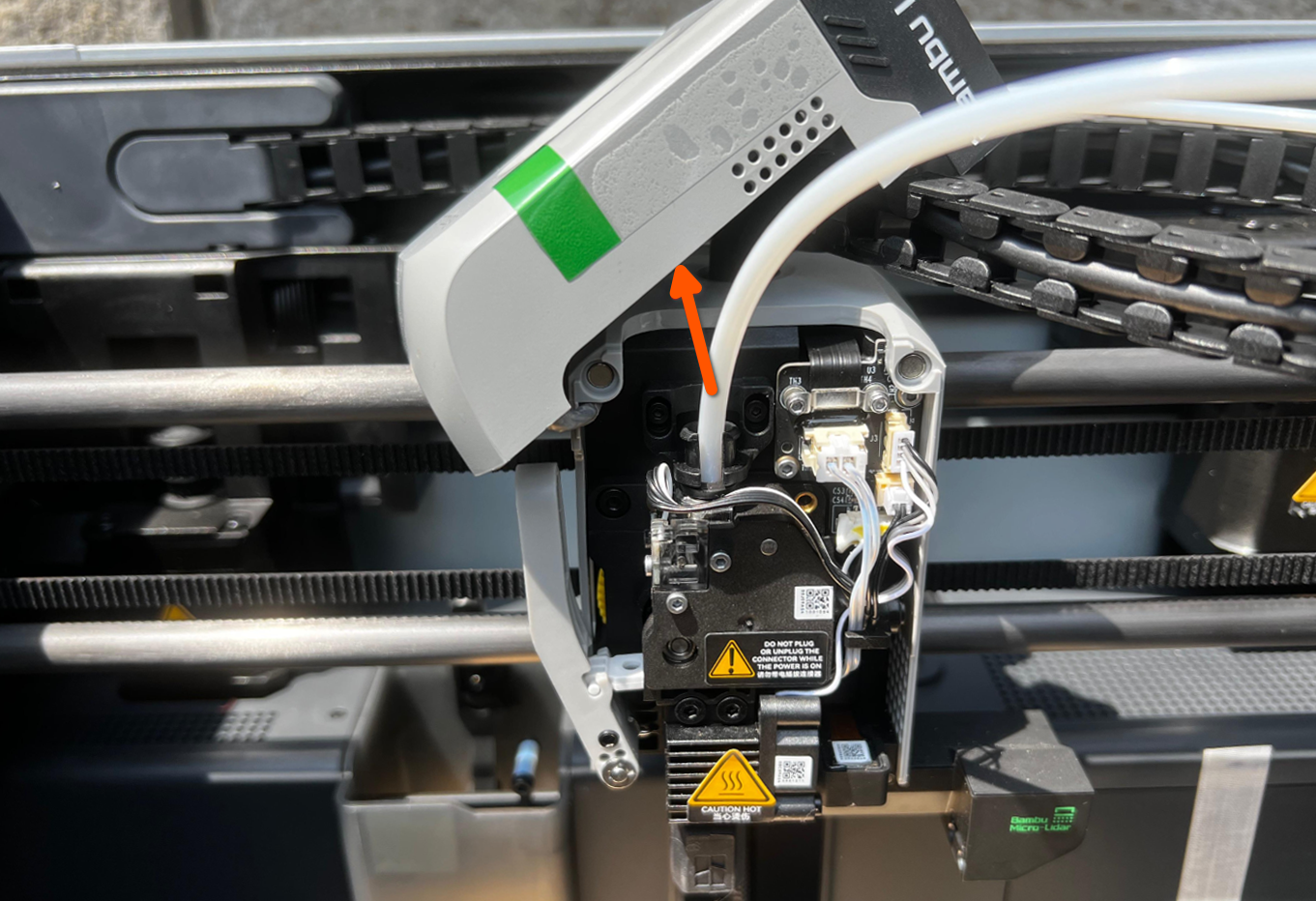
¶ Check the 4-Pin Hotend Fan Cable
¶ Step 1 — Disconnect the Fan
Gently unplug the 4-pin connector from the hotend fan.
Avoid pulling on the wires directly to prevent damage to the connector.
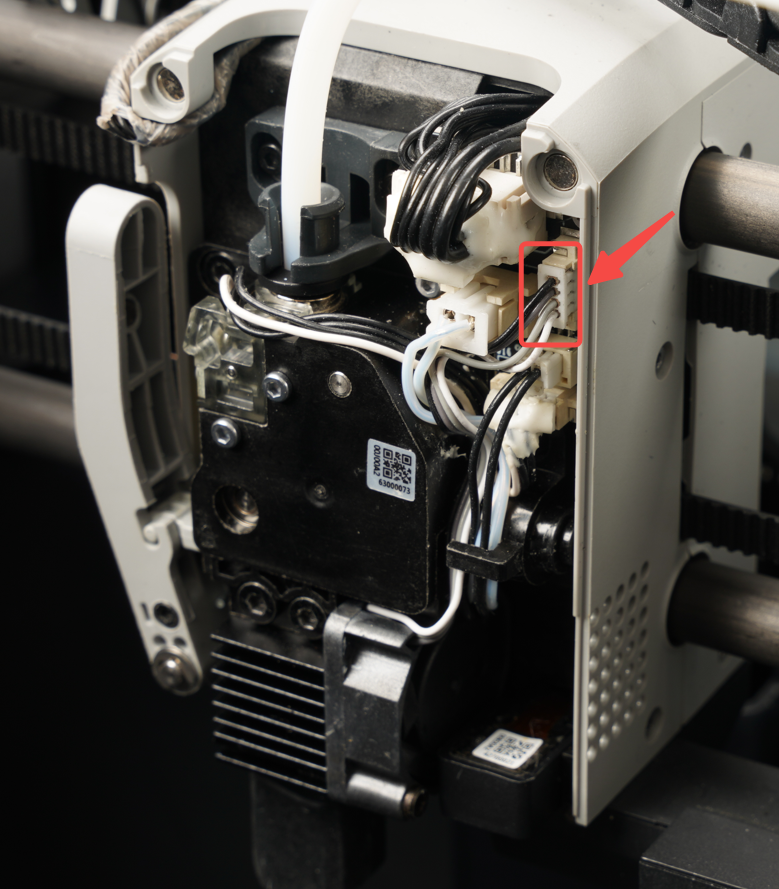
¶ Step 2 — Remove Any Obstructions
Use a pen or screwdriver to manually rotate the fan blades.
Check for debris or foreign objects and remove them if present.
¶ Step 3 — Reconnect and Test
Reconnect the 4-pin connector and the power.
Set the hotend temperature to 51 °C and observe whether the fan starts spinning.
¶ Check the 10-Pin Connector
If the problem persists, disconnect and reconnect the 10-pin connector on the toolhead. Inspect the connector for visible damage.
Note: In the V9 version, the X1 toolhead board and the extruder interface board are connected via an FPC cable, without a 10-pin connector. Some printer versions may not have this connector, so if you don’t see it on your machine, you can skip this step.
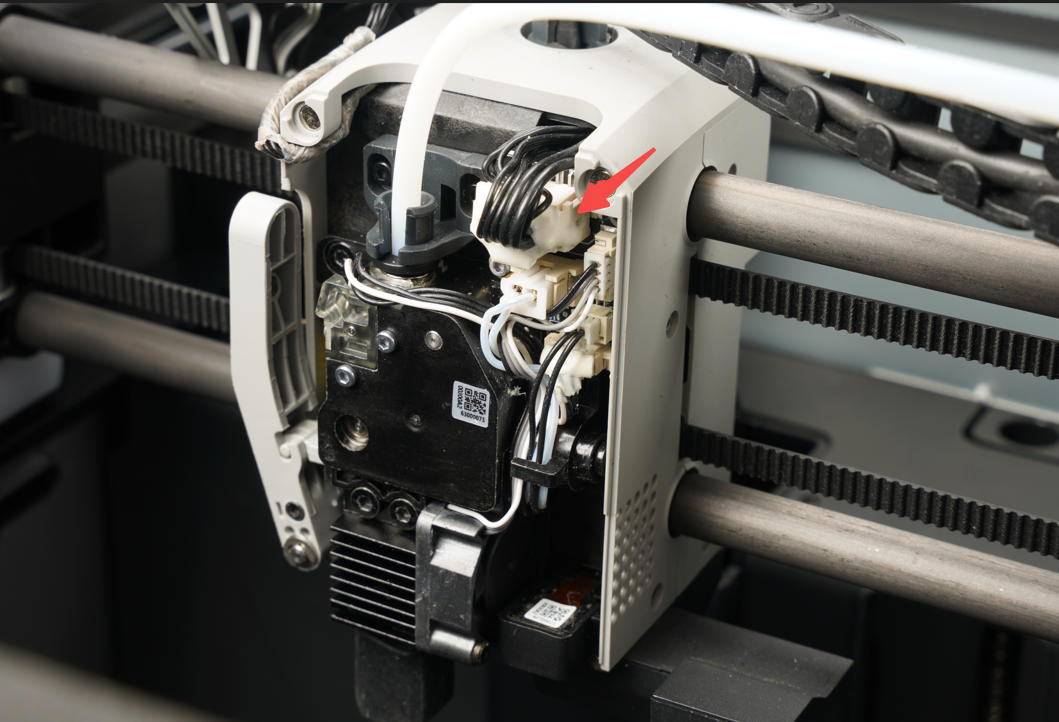
If repeated reconnections do not fix the issue, take clear photos of the 10-pin connector and the hotend fan,
submit a support ticket, and upload your log files for the support team.
¶ Check the FPC Cable
If the error still occurs after the above checks, reseat the FPC cable.
This requires removing the toolhead rear cover and mid-frame — see Replacing the Toolhead Rear Cover and Mid-Frame.
Why this matters:
- The FPC cable connects the Extruder Connection Board to the TH Board.
- Poor contact at either end can cause the fan to malfunction.
- Reseating the cable can rule out loose connections, misaligned plugs, incomplete insertion, or cable damage.
- If reseating does not restore function, the fan or TH Board may need replacement.
For X1 printers with V9 TH Boards, reseat both ends of the FPC cable.
Due to the small BTB socket size, FPC installation can be tricky — reseat one end at a time and avoid excessive force.
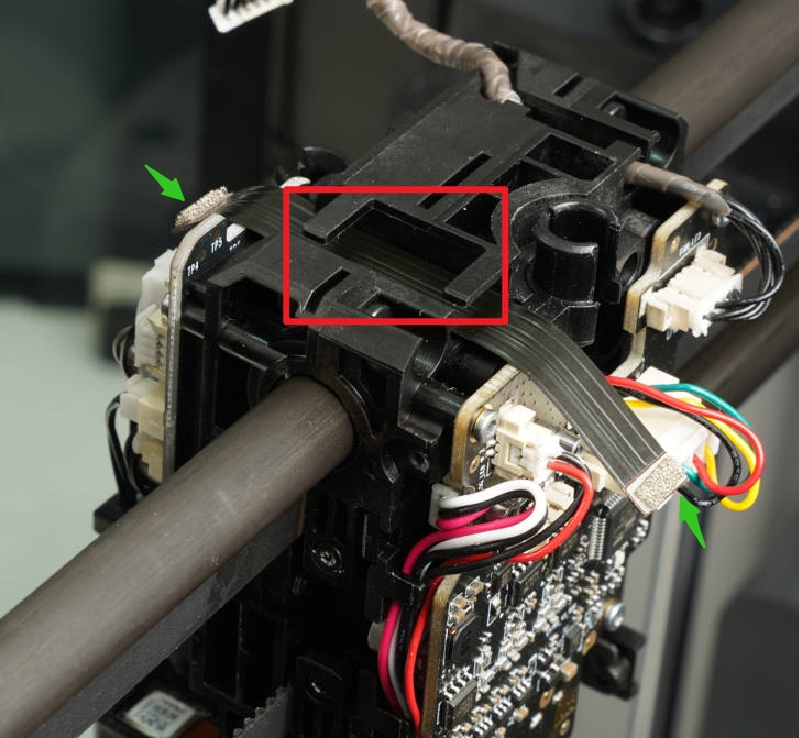
Related Maintenance Links for X1 V9 TH Boards:
¶ Fan Not Blocked but Still Not Spinning
If the fan spins freely but will not run when powered, the hotend fan is likely defective.
Follow Replace the Hotend and Related Components | Bambu Lab Wiki for replacement instructions.
¶ None of the Above Fixes the Issue
If none of the above steps work, the TH Board is likely faulty.
Contact Bambu Lab support for a replacement.
¶ Troubleshooting Steps for the P1 Series
The process for P1 series printers is similar but with differences in cover removal and cable handling.
¶ Preparation
¶ 1. Set Hotend Temperature to 0 °C and disconnect the power
Set the hotend temperature to 0 °C.
- Fan turns off below 50 °C.
- Fan turns on above 50 °C.
¶ 2. Remove the Toolhead Front Cover
From the lower sides of the toolhead, gently pull the front housing outward.
The cover is still attached via the cooling fan cable.
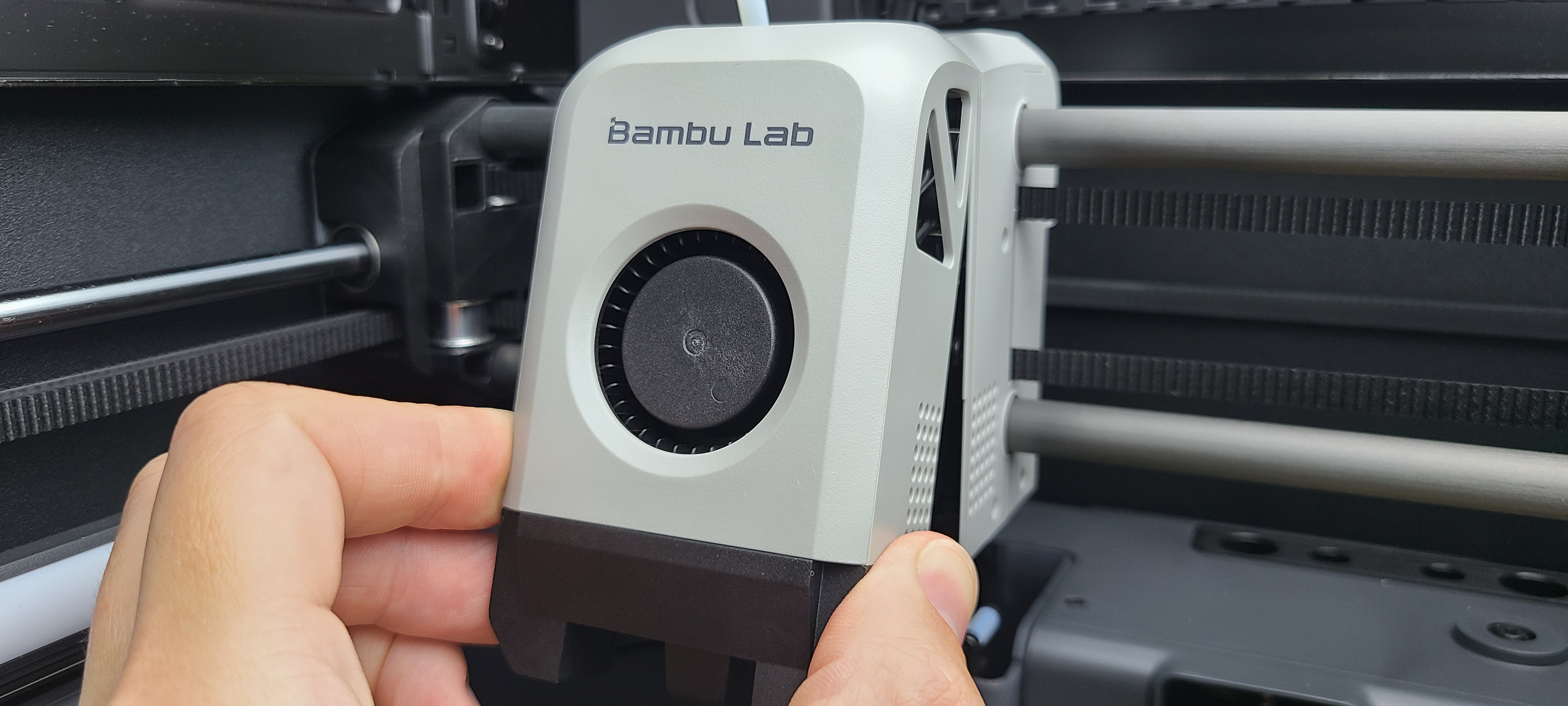
Unplug the black cooling fan cable to fully detach the front housing.
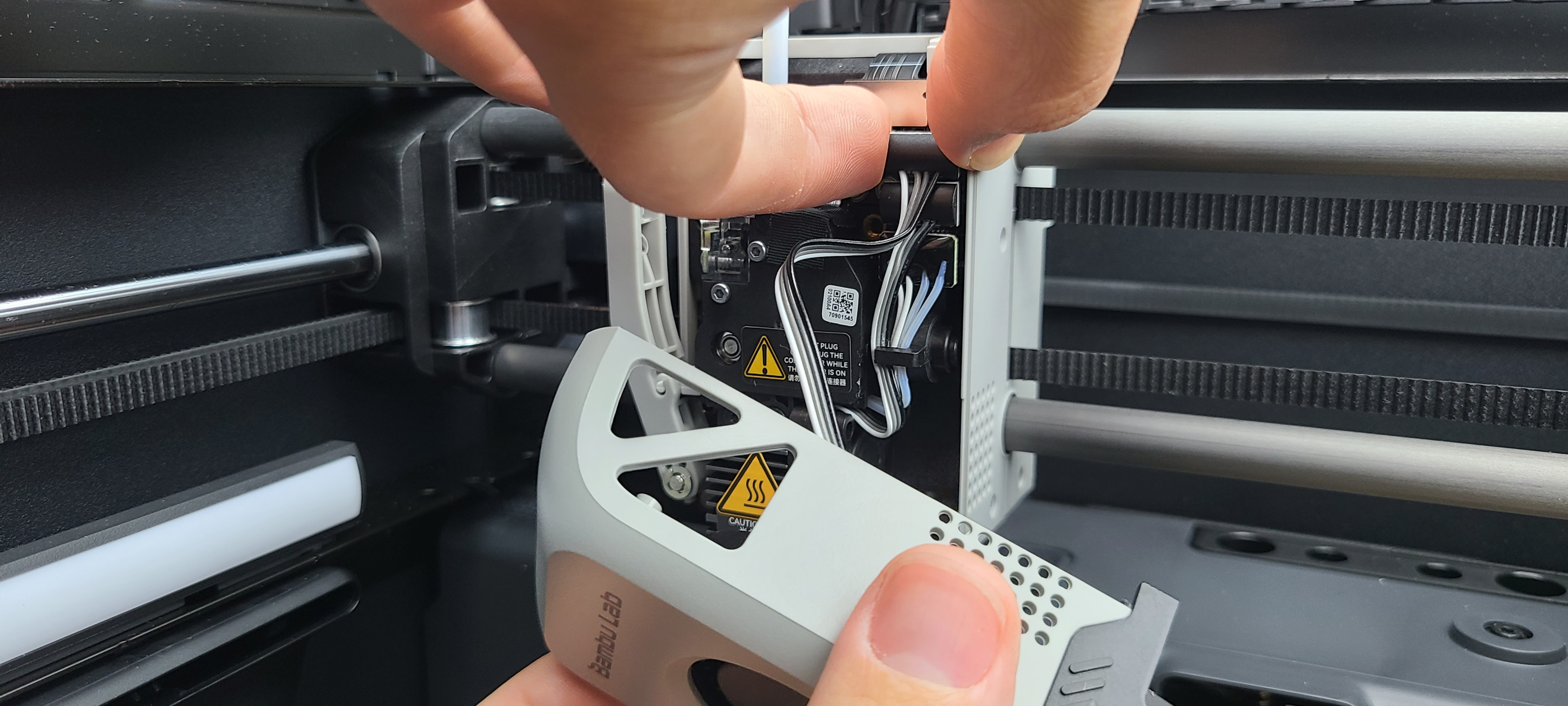
¶ Check the 4-Pin Hotend Fan Cable
¶ Step 1 — Disconnect the Fan
Gently unplug the 4-pin connector from the hotend fan.
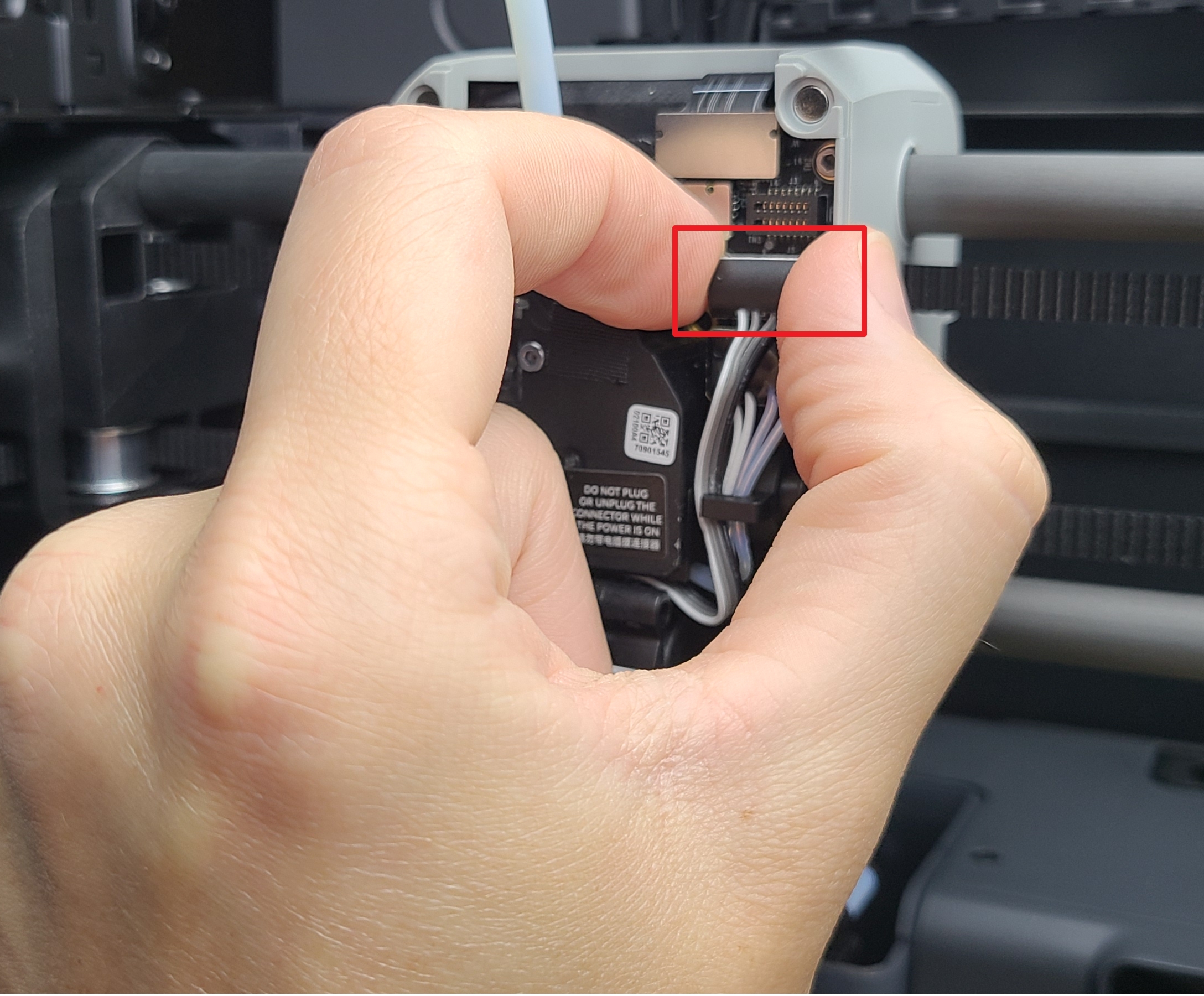
¶ Step 2 — Remove Any Obstructions
Use a pen or screwdriver to rotate the fan blades and clear any debris.
¶ Step 3 — Reconnect and Test
Reconnect the 4-pin connector.
Set hotend temperature to 51 °C and check if the fan starts.
Note: Ensure the connector is fully seated on the correct pin row to avoid misalignment.
| Correct Installation | Incorrect Installation |
|---|---|
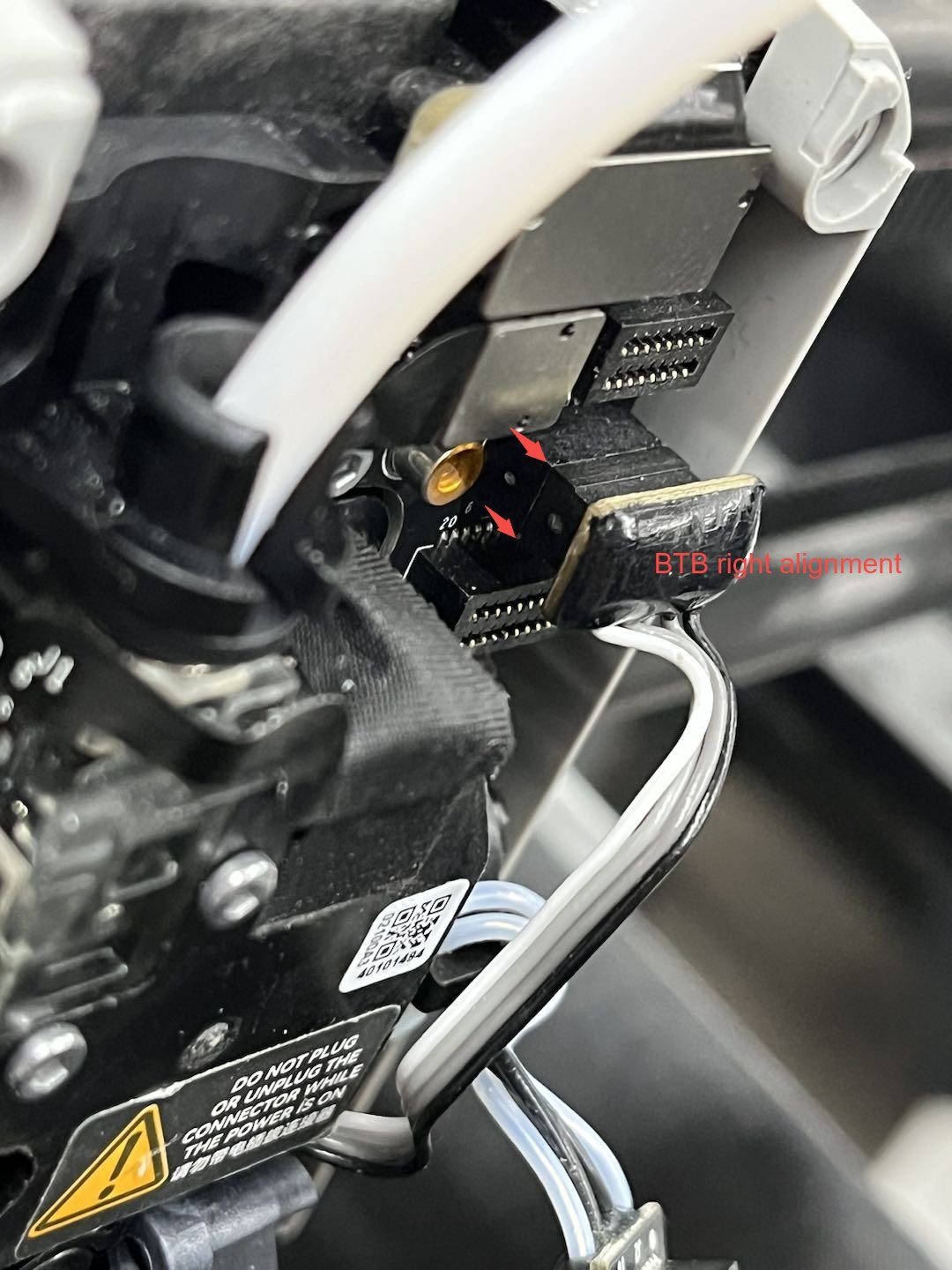 |
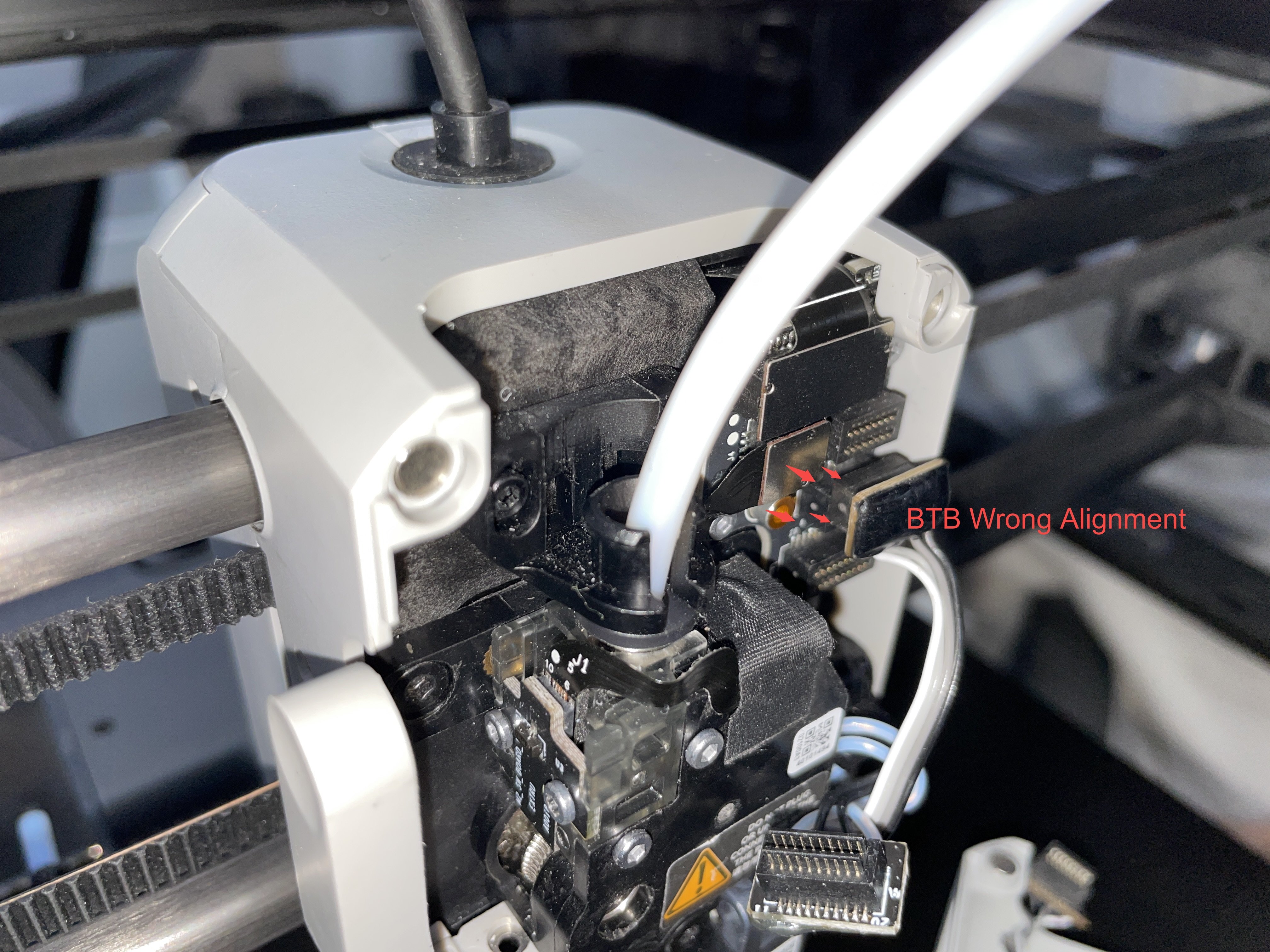 |
¶ Check the FPC Cable
If repeated reseating of the fan connector does not fix the issue, reseat the FPC cable.
Removing the toolhead rear cover and mid-frame is required — see Replacing the Toolhead Rear Cover and Mid-Frame.
Why this matters:
- The FPC cable connects the Extruder Connection Board to the TH Board.
- Poor contact at either end can cause the fan to malfunction.
- Reseating the cable can rule out loose connections, misaligned plugs, incomplete insertion, or cable damage.
- If reseating does not restore function, the fan or TH Board may need replacement.
For P1P printers, reseat both ends of the FPC cable.
Handle with care — reseat one end at a time to avoid damaging the small BTB socket.
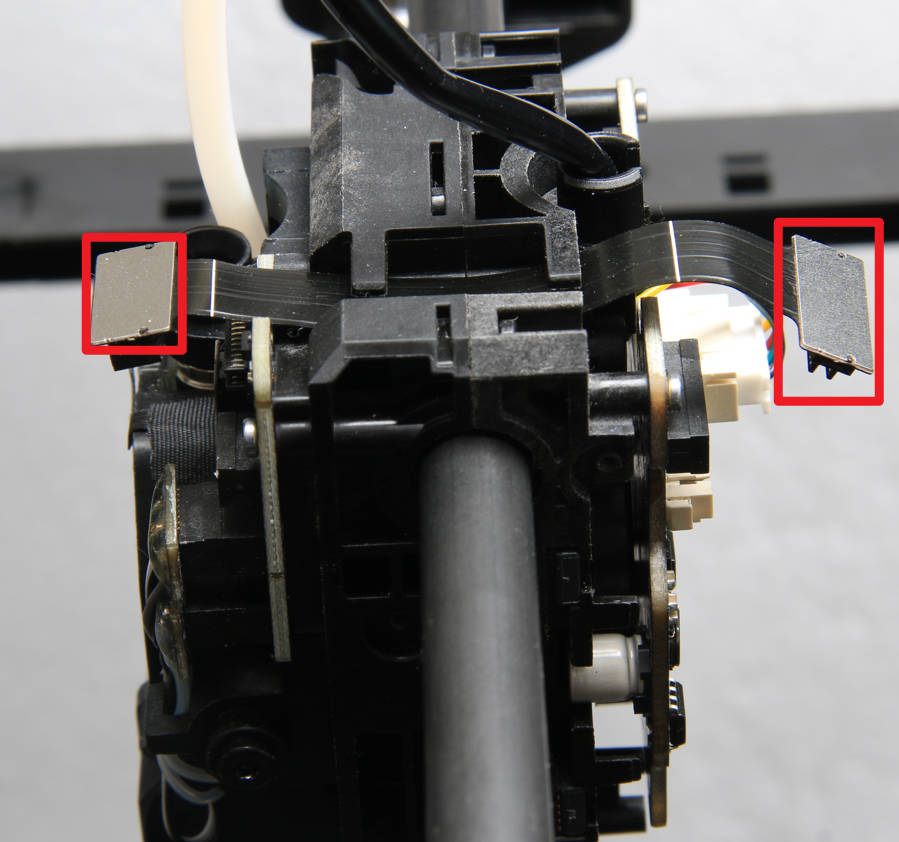
Related Maintenance Links for P1P:
¶ Fan Not Blocked but Still Not Spinning
If the fan spins freely but will not operate, it is likely defective.
See Replace the Hotend and Related Components | Bambu Lab Wiki for replacement steps.
¶ None of the Above Fixes the Issue
If the fan still fails after all checks, the TH Board may be faulty.
Contact Bambu Lab support for assistance.
¶ End Notes
We hope the detailed guide provided has been helpful and informative.
To ensure a safe and effective execution, if you have any concerns or questions about the process described in this article, we recommend submitting a Technical ticket regarding your issue. Please include a picture or video illustrating the problem, as well as any additional information related to your inquiry.